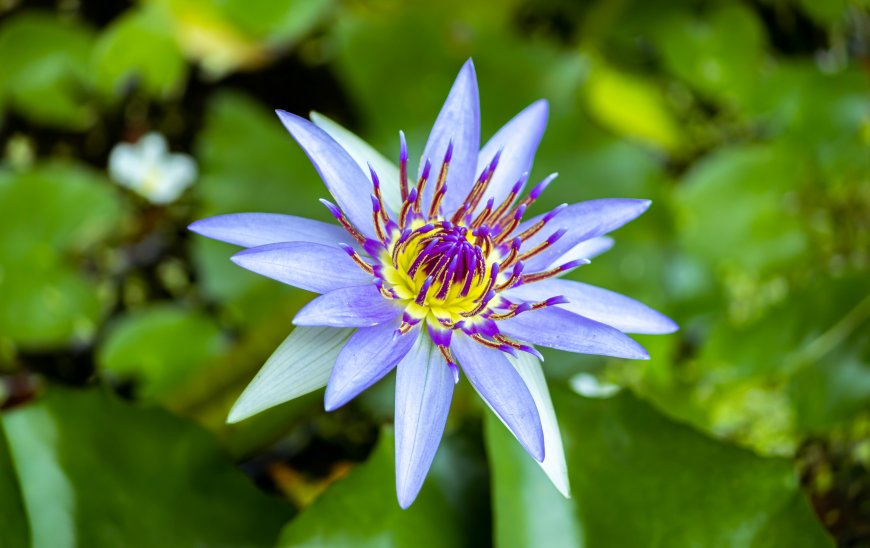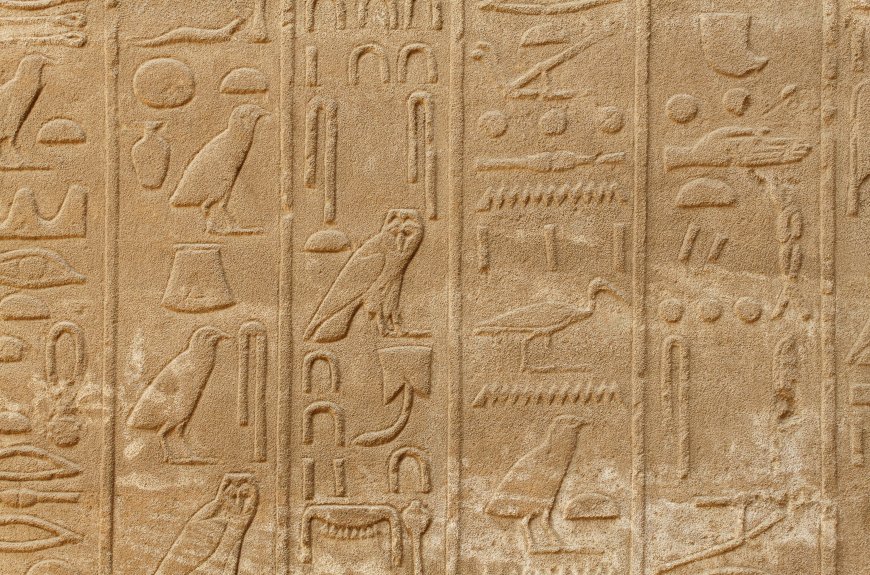What is Blue Lotus
Explore the history, effects, and safety of blue lotus – an ancient aquatic plant with powerful properties. Unveil the secrets of this sacred flower!

The mystical Blue Lotus has long captured the attention of those interested in exploring its rich history and potential effects. This enigmatic aquatic plant, also known as the blue Egyptian lotus or sacred blue lily, has been revered for centuries due to its alluring appearance and rumored psychoactive properties.
In this article, we will investigate the captivating background of the Blue Lotus flower and its importance in past civilizations. We'll also examine the various effects that have been attributed to consuming blue lotus petals or extracts derived from them.
Additionally, we will discuss potential side effects associated with using this intriguing plant material and address concerns about whether it is considered a safe option for recreational use. By gaining a deeper understanding of this captivating water lily, you'll be better equipped to make informed decisions about incorporating it into your own personal journey.
Table of Contents:
- What is Blue Lotus?
- History of the Blue Lotus
- Effects of Blue Lotus
- Side Effects of Blue Lotus
- FAQs in Relation to Blue Lotus
- Conclusion
What is Blue Lotus?
Nymphaea caerulea, commonly known as blue lotus, is a native aquatic plant of the Nile River in Egypt with a long history of medicinal and spiritual use. The dried petals of the blue lotus (Nymphaea caerulea) have been utilized in traditional medicine and spiritual rituals for centuries, but it is now gaining traction as a recreational drug. The flowers are dried and then either smoked or brewed into tea. The effects can range from mild relaxation to intense hallucinations, depending on how much of the active ingredient nuciferine is consumed.
History of the Blue Lotus

The Blue Lotus (Nymphaea caerulea) is an aquatic plant that has been used for centuries in traditional medicine and spiritual ceremonies. Nymphaea caerulea is native to Egypt, India and Southeast Asia but has spread throughout the globe in recent times. The Blue Lotus has long been employed as an agent to spark libido, relax nerves, alleviate discomfort, help the body eliminate fluid and reduce inflammation. It was also used by ancient Egyptians to induce visions during religious rituals.
In traditional Chinese medicine (TCM), the blue lotus was believed to have calming effects on the body and mind. It was thought to help with stress relief and relaxation while improving mental clarity.
The Blue Lotus flower has long been associated with divine love in Hinduism and Buddhism traditions where it symbolizes enlightenment through meditation or yoga practice. Ancient Egyptians also considered this flower sacred; they would offer them up as offerings at temples dedicated to gods like Isis or Hathor who represented fertility and motherhood respectively . In some cultures around the world today it is still seen as a sign of purity or innocence when given as gifts between lovers or family members on special occasions such as weddings or births of children .
Modern research suggests that compounds present in the blue lotus may have potential benefits for physical health conditions such as inflammation, anxiety, depression, insomnia, headaches, muscle spasms and menstrual cramps. However, more studies are needed before these claims can be confirmed conclusively. Its active ingredients are believed to include flavonoids like kaempferol which act on GABA receptors in our brains resulting in calming effects similar those produced by benzodiazepines without any addiction risk associated with them. Caution should be taken when taking any supplement, including this one, particularly if pregnant or breastfeeding and/or already on medications.
The history of the Blue Lotus is a fascinating and varied one, spanning many centuries. Ancient writings have recorded its consequences on both the physical and mental state, making it a captivating subject to delve into further. Moving forward we will discuss the effects that this plant has had throughout its long history.
Effects of Blue Lotus
Nymphaea caerulea, native to Egypt and other parts of the Middle East, has been utilized for centuries in both medicinal and spiritual practices as well as for recreational purposes. Consumption of the Nymphaea caerulea plant has been a part of many traditional treatments, rituals and recreational activities for generations. Consuming blue lotus may bring about various effects in individuals, ranging from a sense of serenity and joy to heightened arousal and better concentration.
The active compounds in blue lotus are apomorphine and nuciferine. Apomorphine, an alkaloid, influences dopamine receptors in the brain to produce its effects while nuciferine works on serotonin receptors which can generate a sense of relaxation or serenity. Additionally, some people have reported mild hallucinogenic effects after consuming blue lotus due to its sedative properties.
When consumed orally or smoked with tobacco or cannabis products, blue lotus can provide a relaxing sensation similar to being high without any intense psychoactive experiences associated with psychedelics like LSD or magic mushrooms. This makes it popular among those who want the calming effects without having their senses completely altered by more powerful substances. Therefore, it is important to be mindful of the dose when consuming blue lotus, as larger amounts may result in more intense effects.
Reports of nausea and vomiting have been noted after consuming high amounts of blue lotus extract, yet these effects typically disappear in a short time frame when the dose has worn off. Other potential risks include dry mouth and drowsiness so it is important not to operate heavy machinery or drive under the influence of this substance if you do choose to use it recreationally. In addition, long term use could lead to addiction although this risk is low compared with other drugs. Since it does not create strong cravings nor cause severe withdrawal symptoms when stopped abruptly. As with all drugs though moderation is key - take small doses at first until you know how your body reacts before increasing dosage levels over time if desired.
Overall, the effects of Blue Lotus are quite beneficial and have been used for centuries to promote relaxation and euphoria. However, there is also a potential risk associated with its use that should be considered before consumption; this will be discussed in the next heading - Side Effects of Blue Lotus.
Side Effects of Blue Lotus

It contains alkaloids such as nuciferine and aporphine which can have both positive and negative effects on the body when consumed. Before partaking in the blue lotus, one should be aware of potential side effects.
Ingesting blue lotus may bring about queasiness or throwing up, a typical reaction to its high alkaloid content which can irritate the stomach when ingested. Alkaloids, in high amounts, can be the source of abdominal discomforts when ingested orally; this may result in nausea or vomiting. Furthermore, large doses may result in dizziness due to its sedative effects. It's important to start with small doses until you understand how your body reacts to it so you don't risk becoming too ill from taking too much at once.
It is essential to be cognizant of the possible repercussions that could arise from consuming blue lotus. With this knowledge in hand, we must now consider whether or not blue lotus is safe for consumption.
Nymphaea caerulea, commonly known as blue lotus, is an aquatic plant that has been utilized in traditional medicines and spiritual ceremonies for generations. The plant contains compounds with psychoactive properties, including nuciferine, which can have sedative effects. While the plant may offer some health benefits, there are also potential risks associated with its use.
FAQs in Relation to Blue Lotus
What is special about blue lotus?
Blue Lotus is an informative website that provides detailed coverage of cannabis, magic mushrooms, psychedelics and other substances in a user-friendly format. It offers comprehensive coverage of these topics in an easy to understand way with its user friendly interface. Blue Lotus also features exclusive content from experts in the field who provide valuable insight into the various aspects of drug use. Blue Lotus also has interactive features, such as discussion boards, where users can exchange ideas and offer guidance on recreational drug use. All this makes Blue Lotus one of the most reliable sources for young adults looking for quality information related to drugs and substance abuse prevention.
What does the blue lotus symbolize?
The blue lotus is a symbol of enlightenment, spiritual awakening and inner peace. It has been used in many cultures throughout history to represent the journey towards higher consciousness and self-realization. In Buddhism, it is associated with wisdom and compassion while in Hinduism it represents divine beauty. The blue lotus also carries symbolic meanings related to fertility, abundance, rebirth and immortality. Its calming presence can bring balance into one’s life by helping them become more mindful of their thoughts and feelings as well as encouraging them to take action on achieving their goals.
What are the side effects of blue lotus vape juice?
Blue lotus vape juice is an herbal extract that can have both positive and negative effects. Common side effects of blue lotus vape juice include nausea, dizziness, headaches, dry mouth and throat irritation; however it may cause anxiety or paranoia if taken in excessive doses. In rare cases it may cause anxiety or paranoia if taken in large doses. Pregnant women and those with medical issues should consult a physician prior to using blue lotus vape juice, as it could possibly lead to negative outcomes. Users should adhere to the producer's guidelines for usage, in order to prevent any potential negative effects from its active components.
What is the myth of the blue lotus?
An age-old Egyptian myth speaks of a stunning blossom, crafted by the sun deity Ra. It was believed to be a source of divine knowledge and enlightenment, providing access to higher realms and greater understanding. The blue lotus was also thought to provide its users with enhanced mental clarity, heightened awareness, improved creativity and spiritual growth. The blue lotus was viewed as having the capacity to bring about eternal life, sometimes referred to as "the elixir of immortality". Today, the blue lotus is still used as an herbal remedy to promote relaxation and reduce stress.
Conclusion
In conclusion, blue lotus is an ancient plant with a long history of use for its psychoactive and medicinal properties. Due to its analgesic, anxiolytic, and potentially antidepressant effects, blue lotus has been used medicinally for centuries. While there are no known side effects associated with the consumption of this plant, it should be consumed responsibly as too much can lead to unpleasant experiences or adverse reactions. With proper research and knowledge about dosage levels, blue lotus can be enjoyed safely without any major risks involved.






































































































































